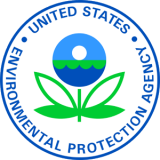Dec. 21, 2016
OSHA cites well operator, two servicing companies after one worker dies, 3 others severely injured while servicing North Dakota well
Investigators find companies failed to maintain well control, resulting in flash fire
WATFORD CITY, N.D. An operator and two servicing companies' failure to control a North Dakota oil well properly led to a flash fire that killed a 52-year-old worker and burned three other workers severely at a Watford City well site, federal investigators have found.
On Dec. 15, 2016, the U.S. Department of Labor's Occupational Safety and Health Administration issued serious safety violations to the well's operator, XTO Energy and the two servicing companies, Most Wanted Well Service LLC, and Sherwood Enterprises Inc., following its investigation of the June 18, 2016, fire and injuries.
"Employers who are directly involved in well servicing operations must coordinate their actions to ensure well control is maintained at all times. Failing to do so can result in catastrophic consequences such as this case where one man lost his life and three others suffered debilitating burns," said Eric Brooks, OSHA's area director in Bismarck. "Communication between the host employer and all contractors is critical in working safely at any site."
Agency investigators determined that while trouble shooting a problem with the drill string, the employers on site failed to maintain well control resulting in a release of hydrocarbons causing an explosion and subsequent flash fire.
A 52-year-old employee of Most Wanted Well Service suffered fatal fall injuries and burns. Two other company employees also suffered burn injuries. OSHA cited the Rock Springs, Wyoming-based company for two serious violations for failing to:
- Maintain well control exposing workers to fire and explosion hazards.
- Provide flame retardant clothing to employees exposed to flash fire hazards.
OSHA has proposed penalties of $24,942. View current citations here.
The third injured worker - who was also burned - was employed by Sherwood Enterprise. He was operating a service rig and tripping pipe out of the well during a snubbing operation when the incident occurred. OSHA cited one serious violation and proposed penalties of $12,471 to the Big Piney, Wyoming-based company for failing to maintain well control. View current citations here.
OSHA also cited the well operator XTO Energy of Sidney, Montana, for one serious safety violation carrying proposed penalties of $12,471, for failing to maintain well control. XTO Energy's corporate headquarters are in Fort Worth, Texas. View current citations here.
All three companies have 15 business days from receipt of its citations and penalties to comply, request an informal conference with OSHA's area director, or contest the findings before the independent Occupational Safety and Health Review Commission.
To ask questions, obtain compliance assistance, file a complaint, or report amputations, eye loss, workplace hospitalizations, fatalities or situations posing imminent danger to workers, the public should call OSHA's toll-free hotline at 800-321-OSHA (6742) or the agency's Bismarck Area Office at 701-250-4521.
Under the Occupational Safety and Health Act of 1970, employers are responsible for providing safe and healthful workplaces for their employees. OSHA's role is to ensure these conditions for America's working men and women by setting and enforcing standards, and providing training, education and assistance. For more information, visit http://www.osha.gov.
# # #






 (Lenexa, Kan., Dec. 20, 2016) - The U.S. Environmental Protection Agency (EPA) is taking action to remove 72 ingredients from its list of inert ingredients approved for use in pesticide products.
(Lenexa, Kan., Dec. 20, 2016) - The U.S. Environmental Protection Agency (EPA) is taking action to remove 72 ingredients from its list of inert ingredients approved for use in pesticide products. 






